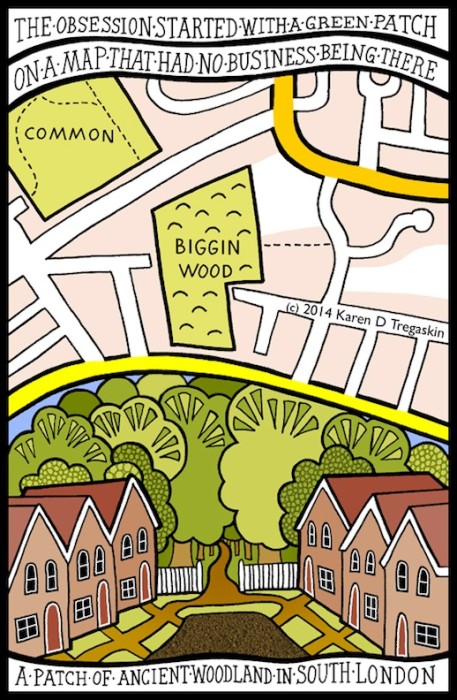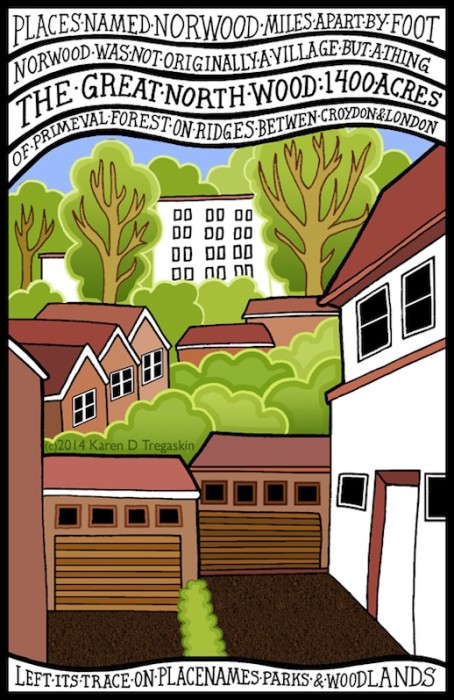Words and pictures by Karen D Tregaskin
1: Biggin Wood
“I was bored with the familiar paths and meadows of Streatham Common, and looking for a new local walk, when I saw a tiny, previously unknown patch of green on the map. Biggin Wood. I found the name ironic; ‘Byghan’ in Cornish means ‘little’. Like a potted plant nestled between rows of safe suburban homes, I slipped down a steep path to find a forgotten copse of massive oak trees, carpets of bluebells and the sudden startling green flash of wild escaped parakeets. Looking up this mysterious woodland on Croydon Council’s website, I discovered that it was one of the last remnants of something called the Great North Wood, a massive forest that once covered the high ridges between London and Croydon.”
These eye-catching illustrations are the handiwork of Karen D Tregaskin, aka Masonic Boom, who we’d like to welcome into the Caught by the River fold as a new contributor.
The first two sketches kick off Karen’s series of “investigations” of the “remnants” of the Great North Wood, a natural oak forest which once stretched between Croydon and London. In her words, “it was full of wild bandits, but is now reduced to tiny patches of ancient oaks round the backs of peoples’ gardens.”
Keep your eyes peeled for the next batch in a few weeks’ time…
2: Greater Norwood
“Norwood is a town without a centre. On the map, there are various Norwoods, miles apart; Upper Norwood, South Norwood, Norwood Grove, Norwood New Town, West Norwood. Reading local history in the library and on the Internet revealed that Norwood was not named for a place, but a thing: again, my Great North Wood. (Rather like the far-scattered ‘Eppings’ across Northeast London and Essex took their name from the forest they sheltered beside.) The Great North Wood left its name all across Southeast London: Forest Hill, Honor Oak, Kingswood. Here, a modern housing estate called ‘The Woodlands’ revealed a stand of untouched ancient oaks on a slope too steep to develop.”

